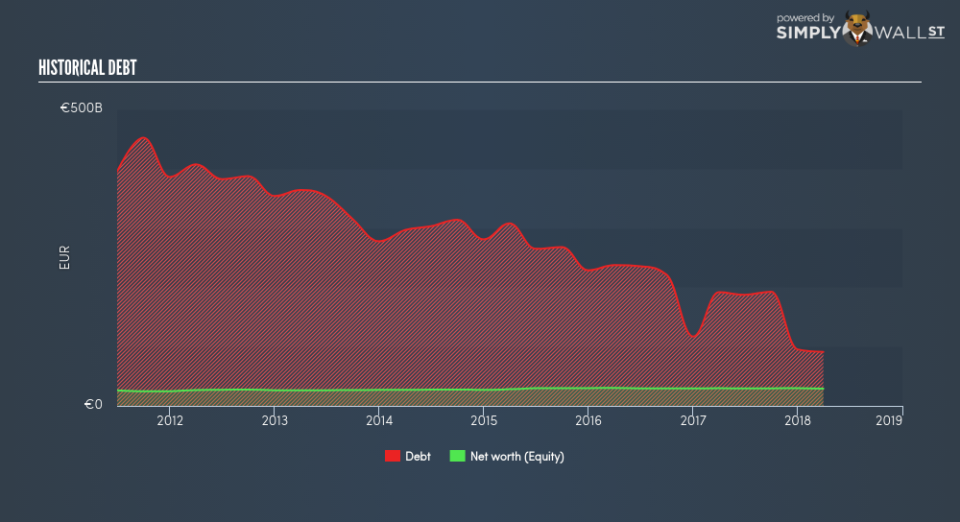Why Commerzbank AG’s (FRA:CBK) ROE Of 0.98% Does Not Tell The Whole Story

This article is intended for those of you who are at the beginning of your investing journey and want to begin learning the link between Commerzbank AG (FRA:CBK)’s return fundamentals and stock market performance.
Commerzbank AG’s (FRA:CBK) most recent return on equity was a substandard 0.98% relative to its industry performance of 9.37% over the past year. An investor may attribute an inferior ROE to a relatively inefficient performance, and whilst this can often be the case, knowing the nuts and bolts of the ROE calculation may change that perspective and give you a deeper insight into CBK’s past performance. I will take you through how metrics such as financial leverage impact ROE which may affect the overall sustainability of CBK’s returns. See our latest analysis for Commerzbank
Peeling the layers of ROE – trisecting a company’s profitability
Return on Equity (ROE) is a measure of Commerzbank’s profit relative to its shareholders’ equity. An ROE of 0.98% implies €0.0098 returned on every €1 invested. While a higher ROE is preferred in most cases, there are several other factors we should consider before drawing any conclusions.
Return on Equity = Net Profit ÷ Shareholders Equity
ROE is measured against cost of equity in order to determine the efficiency of Commerzbank’s equity capital deployed. Its cost of equity is 10.42%. Since Commerzbank’s return does not cover its cost, with a difference of -9.44%, this means its current use of equity is not efficient and not sustainable. Very simply, Commerzbank pays more for its capital than what it generates in return. ROE can be split up into three useful ratios: net profit margin, asset turnover, and financial leverage. This is called the Dupont Formula:
Dupont Formula
ROE = profit margin × asset turnover × financial leverage
ROE = (annual net profit ÷ sales) × (sales ÷ assets) × (assets ÷ shareholders’ equity)
ROE = annual net profit ÷ shareholders’ equity
Essentially, profit margin shows how much money the company makes after paying for all its expenses. The other component, asset turnover, illustrates how much revenue Commerzbank can make from its asset base. The most interesting ratio, and reflective of sustainability of its ROE, is financial leverage. Since ROE can be artificially increased through excessive borrowing, we should check Commerzbank’s historic debt-to-equity ratio. At over 2.5 times, Commerzbank’s debt-to-equity ratio is very high and indicates the below-average ROE is already being generated by significant leverage levels.
Next Steps:
ROE is one of many ratios which meaningfully dissects financial statements, which illustrates the quality of a company. Commerzbank’s ROE is underwhelming relative to the industry average, and its returns were also not strong enough to cover its own cost of equity. Its concerning leverage level means its ROE is already supported by high debt, raising questions over whether ROE will further decline in the future. ROE is a helpful signal, but it is definitely not sufficient on its own to make an investment decision.
For Commerzbank, there are three important factors you should further research:
Financial Health: Does it have a healthy balance sheet? Take a look at our free balance sheet analysis with six simple checks on key factors like leverage and risk.
Valuation: What is Commerzbank worth today? Is the stock undervalued, even when its growth outlook is factored into its intrinsic value? The intrinsic value infographic in our free research report helps visualize whether Commerzbank is currently mispriced by the market.
Other High-Growth Alternatives : Are there other high-growth stocks you could be holding instead of Commerzbank? Explore our interactive list of stocks with large growth potential to get an idea of what else is out there you may be missing!
To help readers see pass the short term volatility of the financial market, we aim to bring you a long-term focused research analysis purely driven by fundamental data. Note that our analysis does not factor in the latest price sensitive company announcements.
The author is an independent contributor and at the time of publication had no position in the stocks mentioned.

 Yahoo Finance
Yahoo Finance 

